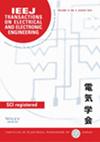求助PDF
{"title":"One-Stage Long-Tailed Object Detection Based on Adaptive Class Suppression Equalized Focal Loss","authors":"Qian Yang, Xin Feng, Shuqiu Tan","doi":"10.1002/tee.70027","DOIUrl":null,"url":null,"abstract":"<p>When dealing with long-tailed data, performance is degraded due to the model's bias in classifying most of the tail categories. Although good results have been achieved for long-tailed object detection, almost all long-tailed object detectors are based on a two-stage paradigm. One-stage detectors have advantages such as fast inference speed and ease of deployment, making them more common in practical applications. However, in-depth research on one-stage long-tail object detection is still lacking. Under the one-stage object detection paradigm, the main reasons for performance degradation in long-tailed object detection models are as follows: (1) the extreme imbalance between foreground samples and background samples; (2) the long-tailed problem among foreground categories; (3) insufficient diversity of samples in the tail categories, which makes it difficult for the model to focus on the important features of the tail samples. To address these problems, this paper proposes the adaptive class suppression equalized focal loss (AEFL), which introduces adaptive class suppression weight parameters to dynamically suppress excessive negative gradients generated by a large number of negative samples during training, thereby improving tail category accuracy. Meanwhile, a channel self-attention mechanism is introduced in the C5 and C4 layers of the FPN, which contain rich semantic information, to enable the implicit clustering of objects of the same category and enhance semantic continuity. The improved CSA-FPN helps the model pay more attention to important features, and when dealing with long-tailed categories, it can better focus on the features of these categories, further enhancing the effect of AEFL. The methods in this paper are extensively tested on the LVIS-0.5 dataset and a long-tailed object detection dataset on the Kaggle platform, and the experimental results show that the proposed methods outperform most of the existing one-stage detection networks on two different long-tailed datasets. © 2025 Institute of Electrical Engineers of Japan and Wiley Periodicals LLC.</p>","PeriodicalId":13435,"journal":{"name":"IEEJ Transactions on Electrical and Electronic Engineering","volume":"20 9","pages":"1424-1435"},"PeriodicalIF":1.1000,"publicationDate":"2025-04-25","publicationTypes":"Journal Article","fieldsOfStudy":null,"isOpenAccess":false,"openAccessPdf":"","citationCount":"0","resultStr":null,"platform":"Semanticscholar","paperid":null,"PeriodicalName":"IEEJ Transactions on Electrical and Electronic Engineering","FirstCategoryId":"5","ListUrlMain":"https://onlinelibrary.wiley.com/doi/10.1002/tee.70027","RegionNum":4,"RegionCategory":"工程技术","ArticlePicture":[],"TitleCN":null,"AbstractTextCN":null,"PMCID":null,"EPubDate":"","PubModel":"","JCR":"Q4","JCRName":"ENGINEERING, ELECTRICAL & ELECTRONIC","Score":null,"Total":0}
引用次数: 0
引用
批量引用
Abstract
When dealing with long-tailed data, performance is degraded due to the model's bias in classifying most of the tail categories. Although good results have been achieved for long-tailed object detection, almost all long-tailed object detectors are based on a two-stage paradigm. One-stage detectors have advantages such as fast inference speed and ease of deployment, making them more common in practical applications. However, in-depth research on one-stage long-tail object detection is still lacking. Under the one-stage object detection paradigm, the main reasons for performance degradation in long-tailed object detection models are as follows: (1) the extreme imbalance between foreground samples and background samples; (2) the long-tailed problem among foreground categories; (3) insufficient diversity of samples in the tail categories, which makes it difficult for the model to focus on the important features of the tail samples. To address these problems, this paper proposes the adaptive class suppression equalized focal loss (AEFL), which introduces adaptive class suppression weight parameters to dynamically suppress excessive negative gradients generated by a large number of negative samples during training, thereby improving tail category accuracy. Meanwhile, a channel self-attention mechanism is introduced in the C5 and C4 layers of the FPN, which contain rich semantic information, to enable the implicit clustering of objects of the same category and enhance semantic continuity. The improved CSA-FPN helps the model pay more attention to important features, and when dealing with long-tailed categories, it can better focus on the features of these categories, further enhancing the effect of AEFL. The methods in this paper are extensively tested on the LVIS-0.5 dataset and a long-tailed object detection dataset on the Kaggle platform, and the experimental results show that the proposed methods outperform most of the existing one-stage detection networks on two different long-tailed datasets. © 2025 Institute of Electrical Engineers of Japan and Wiley Periodicals LLC.

 求助内容:
求助内容: 应助结果提醒方式:
应助结果提醒方式:


